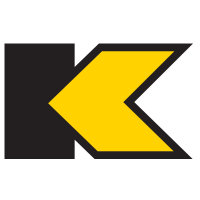
Kennametal Inc
NYSE:KMT


| US |

|
Johnson & Johnson
NYSE:JNJ
|
Pharmaceuticals
|
| US |

|
Berkshire Hathaway Inc
NYSE:BRK.A
|
Financial Services
|
| US |

|
Bank of America Corp
NYSE:BAC
|
Banking
|
| US |

|
Mastercard Inc
NYSE:MA
|
Technology
|
| US |

|
UnitedHealth Group Inc
NYSE:UNH
|
Health Care
|
| US |

|
Exxon Mobil Corp
NYSE:XOM
|
Energy
|
| US |

|
Pfizer Inc
NYSE:PFE
|
Pharmaceuticals
|
| US |

|
Palantir Technologies Inc
NYSE:PLTR
|
Technology
|
| US |

|
Nike Inc
NYSE:NKE
|
Textiles, Apparel & Luxury Goods
|
| US |

|
Visa Inc
NYSE:V
|
Technology
|
| CN |

|
Alibaba Group Holding Ltd
NYSE:BABA
|
Retail
|
| US |

|
3M Co
NYSE:MMM
|
Industrial Conglomerates
|
| US |

|
JPMorgan Chase & Co
NYSE:JPM
|
Banking
|
| US |

|
Coca-Cola Co
NYSE:KO
|
Beverages
|
| US |

|
Walmart Inc
NYSE:WMT
|
Retail
|
| US |

|
Verizon Communications Inc
NYSE:VZ
|
Telecommunication
|
Utilize notes to systematically review your investment decisions. By reflecting on past outcomes, you can discern effective strategies and identify those that underperformed. This continuous feedback loop enables you to adapt and refine your approach, optimizing for future success.
Each note serves as a learning point, offering insights into your decision-making processes. Over time, you'll accumulate a personalized database of knowledge, enhancing your ability to make informed decisions quickly and effectively.
With a comprehensive record of your investment history at your fingertips, you can compare current opportunities against past experiences. This not only bolsters your confidence but also ensures that each decision is grounded in a well-documented rationale.
Do you really want to delete this note?
This action cannot be undone.

| 52 Week Range |
22.2027
31.0181
|
| Price Target |
|
We'll email you a reminder when the closing price reaches USD.
Choose the stock you wish to monitor with a price alert.

|
Johnson & Johnson
NYSE:JNJ
|
US |

|
Berkshire Hathaway Inc
NYSE:BRK.A
|
US |

|
Bank of America Corp
NYSE:BAC
|
US |

|
Mastercard Inc
NYSE:MA
|
US |

|
UnitedHealth Group Inc
NYSE:UNH
|
US |

|
Exxon Mobil Corp
NYSE:XOM
|
US |

|
Pfizer Inc
NYSE:PFE
|
US |

|
Palantir Technologies Inc
NYSE:PLTR
|
US |

|
Nike Inc
NYSE:NKE
|
US |

|
Visa Inc
NYSE:V
|
US |

|
Alibaba Group Holding Ltd
NYSE:BABA
|
CN |

|
3M Co
NYSE:MMM
|
US |

|
JPMorgan Chase & Co
NYSE:JPM
|
US |

|
Coca-Cola Co
NYSE:KO
|
US |

|
Walmart Inc
NYSE:WMT
|
US |

|
Verizon Communications Inc
NYSE:VZ
|
US |
This alert will be permanently deleted.
 Kennametal Inc
Kennametal Inc
Kennametal Inc
Kennametal Inc., with its roots tracing back to 1938, has built a legacy of innovation and precision, becoming a pivotal player in the manufacturing world. Founded by metallurgist Philip M. McKenna, the company revolutionized metalworking by introducing tungsten-titanium carbide tooling, which significantly increased efficiency and durability in heavy industries. From these origins, Kennametal has expanded its expertise into a diverse array of sectors including aerospace, automotive, energy, and infrastructure. The company operates through two primary segments: Industrial and Infrastructure. The Industrial segment focuses on cutting tools and tooling systems that enhance productivity in manufacturing. Meanwhile, the Infrastructure segment delivers tools, engineered components, and surface technology for the construction and mining industries.
Kennametal's financial engine is powered by its ability to meet the evolving needs of global industries. The company earns revenue through the design, manufacture, and sale of durable, high-performance tooling and wear-resistant solutions. By maintaining a relentless emphasis on innovation, Kennametal is able to provide solutions that help its customers reduce costs and improve efficiency in their operations. This approach ensures not only customer loyalty but also a steady stream of revenue. The company's strategic investments in advanced manufacturing technologies, such as additive manufacturing and digital machining, underscore its commitment to sustaining its competitive edge in a rapidly changing technological landscape. With a global footprint that spans over 60 countries, Kennametal leverages its size and expertise to serve a wide range of clients, ensuring a robust and diverse cash flow from multiple international markets.

Kennametal Inc., with its roots tracing back to 1938, has built a legacy of innovation and precision, becoming a pivotal player in the manufacturing world. Founded by metallurgist Philip M. McKenna, the company revolutionized metalworking by introducing tungsten-titanium carbide tooling, which significantly increased efficiency and durability in heavy industries. From these origins, Kennametal has expanded its expertise into a diverse array of sectors including aerospace, automotive, energy, and infrastructure. The company operates through two primary segments: Industrial and Infrastructure. The Industrial segment focuses on cutting tools and tooling systems that enhance productivity in manufacturing. Meanwhile, the Infrastructure segment delivers tools, engineered components, and surface technology for the construction and mining industries.
Kennametal's financial engine is powered by its ability to meet the evolving needs of global industries. The company earns revenue through the design, manufacture, and sale of durable, high-performance tooling and wear-resistant solutions. By maintaining a relentless emphasis on innovation, Kennametal is able to provide solutions that help its customers reduce costs and improve efficiency in their operations. This approach ensures not only customer loyalty but also a steady stream of revenue. The company's strategic investments in advanced manufacturing technologies, such as additive manufacturing and digital machining, underscore its commitment to sustaining its competitive edge in a rapidly changing technological landscape. With a global footprint that spans over 60 countries, Kennametal leverages its size and expertise to serve a wide range of clients, ensuring a robust and diverse cash flow from multiple international markets.






























 You don't have any saved screeners yet
You don't have any saved screeners yet
